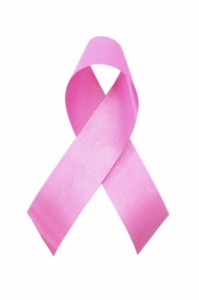
Sexual intercourse should be a comfortable and mutually desirable experience for both individuals involved. If you are experiencing pain during sex, also known as dyspareunia, the pain you feel could result in greater complications or emotional distress between you and your partner. There are several factors that cause women to experience pain during sex. Speak with your OBGYN to determine if one of the following conditions is present:
- Insufficient lubrication – This is often related to a woman feeling anxious during sex. By relaxing, lengthening foreplay, or utilizing a sexual lubricant, this issue can be resolved and comfort can be increased.
- Vaginismus – This is a condition caused by the involuntary squeezing of a woman’s vagina muscles during insertion. The sensation can range from mildly uncomfortable to painful. There are exercises that a woman can do to help reduce the occurrence of the muscle spasms within only a few weeks.
- Vaginitis – This term encompasses various conditions that cause infection or inflammation of the vagina, including vulvovaginitis. Often resulting from a vaginal infection caused by such factors as bacteria, yeast, or viruses, vaginal infections can result in pain during sex.
- Cervical infection – Sometimes during sex the penis can reach the cervix when at maximum penetration. If the cervix is infected, a woman can experience pain.
- Uterine Fibroids – These benign lumps grow on the uterus, and can cause pain during sex among other symptoms.
- Endometriosis – This condition is caused by the development of uterine-lining outside of the uterus and causes abdominal pain, including during sex, heavy periods, and infertility. Treatment options include pain relievers, hormones, and surgery.
- Ovarian cysts – These cysts are closed, sac-like structures within the ovary that are filled with a liquid or semisolid substance. Ovarian cysts cause abdominal pain as well as pain during intercourse.
- Pelvic inflammatory disease (PID) – This disease occurs when tissues deep inside a woman’s pelvis become severely inflamed. The pressure of intercourse irritates the issue and causes deep pain.
- Ectopic pregnancy – An ectopic pregnancy occurs when a fertilized egg develops inside the fallopian tube, instead of the uterus. An ectopic pregnancy occurs in 1 of every 50 pregnancies. Symptoms include lower abdominal pain, sharp abdominal cramps, pain on one side of the body, and pain during sex.
- Menopause – During menopause, a woman’s vaginal lining can lose its normal moisture and become dry, leading to pain during sex.
- Sexually transmitted diseases (STD) – Pain during sex has been linked to such STDs as genital warts and herpes. If you are experiencing pain during sex, and think you may have an STD, speak with your OBGYN immediately.
- Injury to the vulva or vagina – An injury that causes pain during sex may include a tear from childbirth or an episiotomy. In addition, having sex too soon after surgery or childbirth may result in pain during intercourse.
Of course, if you are experiencing any of these symptoms, it’s best to discuss with your gynecologist. He/she can discuss ways to alleviate pain during intercourse. If you are looking for a new gynecologist and live in the Western New York area, please call our practice. We are accepting new patients.
More
 October is breast cancer awareness month. Throughout this month, Chouchani, Sayegh and Bagnarello MD will be posting articles about breast cancer prevention and what to do post diagnosis. This week we are focused on early detection.
October is breast cancer awareness month. Throughout this month, Chouchani, Sayegh and Bagnarello MD will be posting articles about breast cancer prevention and what to do post diagnosis. This week we are focused on early detection.
Breast cancer is a disease that occurs when malignant (bad) cancer cells form in the tissue of the breast. One in eight women will be diagnosed with breast cancer during their lifetime and breast cancer is the most commonly diagnosed cancer in women. While breast cancer is the second leading cause of death in women, it can also occur in men with an estimated 2,150 men diagnosed per year.
However, according to the National Cancer Institute, when detected early in the “localized stage,” the five-year survival rate for breast cancer is 98%.
Early detection is easiest when you know the signs and symptoms of breast cancer while also performing regular self-exams.
Signs and symptoms to watch for:
- Nipple tenderness
- Thickening lump in the breast or underarm area
- Change in the skin around the breast or nipple, or enlargement of the skin’s pores
- Lump in the breast or a change in the shape or size of the breast
- Dimples anywhere on the breast
- Unexplained swelling or shrinkage of the breast (especially limited to one side)
- Nipple turned inward or inverted
- Red, swollen or scaly skin around the breast, nipple or areola
- Any clear or bloody nipple discharge
Most people experiencing signs and symptoms will only experience two or three and that does not mean they automatically have breast cancer. If you are experiencing any of the signs or symptoms, or feel any sort of unexplained lump in the breast or armpit area, contact your physician immediately.
Self-exams are extremely important especially concerning early detection. For further instruction on performing self-exams, see a previous article here, or you can find more information on the website for the National Breast Cancer Foundation here. Self-exams should be performed at home about once a month.
A clinical exam can be performed by a healthcare professional in-office during an appointment or during an annual exam or physical. Healthcare professionals will check the breast and armpit for lumps while also checking the skin for abnormal coloration, texture or discharge.
Mammograms are conducted by taking an x-ray of the breast tissue to examine the tissue for suspicious clusters, flecks, growths etc. Women over 40 should have a mammogram every one to two years, while women under 40 with risk factors should ask their healthcare professional what’s best.
The National Breast Cancer Foundation also offers an Early Detection Plan which is available for iPhone and Android on the App Store and on Google Play. The EDP reminds users to do monthly self-exams with notifications on their phones, tablets or computers and also aids in scheduling clinical breast exams and mammograms. For more information, visit their website here.
Reducing the risk of breast cancer can be as simple as maintaining a healthy weight, staying physically active, maintaining a healthy diet, and limiting alcohol and tobacco consumption. Early detection leads to the greatest possibility for efficient and successful treatment.
For more information on breast cancer, visit our patient education section here. And if you’d like to make an appointment with any of our doctors, please give us a call today. We are accepting new patients in all three of our offices in Western New York!
More
 If you made New Year’s resolutions for 2014, probably at least one of them was related to health or fitness. And if you’re like most people, you’ve already started to fall behind on those resolutions, if you haven’t given up already.
If you made New Year’s resolutions for 2014, probably at least one of them was related to health or fitness. And if you’re like most people, you’ve already started to fall behind on those resolutions, if you haven’t given up already.
It’s normal to find it tough to stay on track with a regular fitness routine, but let’s make this the year you take care of you. Try these practical tips that are easy to implement and can drastically increase your chances for success.
1. Start a goal board.
This can be as small as placing Post-It notes in strategic places to keep your resolutions top of mind, or as large as a white board where you outline your personal goals and plans for the year. Putting your goals in writing, where you can see them, helps not only with visual motivation but also to chart your progress.
2. Create monthly goals.
It’s common to lose sight of your New Year’s fitness goals by mid-February, but if you have specific goals set for each month, it can help keep you motivated and on track. What’s your goal for this month? Keep it SMART— specific, measurable, attainable, realistic and timely.
3. Take small steps.
Drink 8 ounces of water every morning before having a cup of coffee. Exercise three times a week for 30 minutes (60 minutes if you are active already). Use the stairs at work instead of the elevator. Turn off all technology by 8 p.m., go to bed at 10 p.m., and wake up at 6 a.m. Prepare a healthy lunch and snacks for the next day before you go to bed. These little lifestyle changers will add up!
4. Create support for yourself.
Tell friends about your plans. Find a community or group—online or in person—that is on a similar path. Nothing helps keep you on track more than supportive friends, who can encourage you along the way and congratulate you when you have achieved a milestone. And checking in with your network helps keep you accountable for your actions and helps you celebrate your progress.
5. Keep on moving.
Sometimes setbacks will happen, but don’t throw in the towel and quit if you have a bad day or a bad week. Just keep moving forward and get started again. It’s never too late to start again when it comes to your health!
At Chouchani, Sayegh and Bagnarello, your health is our top priority! Please call and make an appointment if you’d like to visit a top OBGYN practice in Buffalo that cares about your overall well-being.
More



